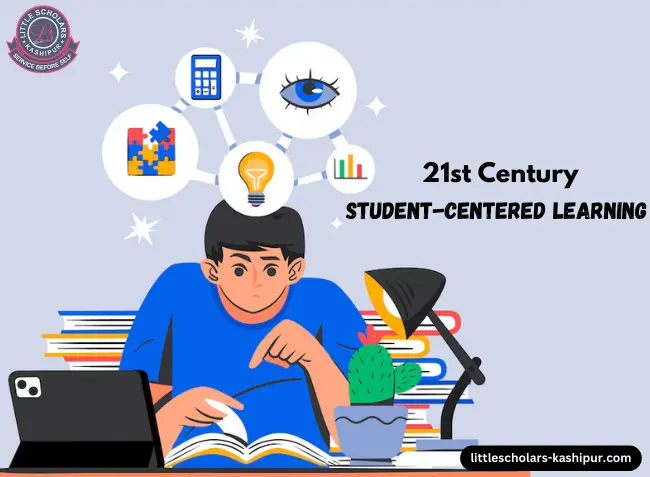Education is changing, and so are the ways we teach. One method gaining popularity is student-centered learning. This approach focuses on students, tailoring education to fit their needs and creating a more engaging learning environment. But what exactly is student-centered learning, and why does it matter? Let's explore this innovative approach to education.
What is Student-Centered Learning?
Student-centered learning is a teaching philosophy where students actively participate in their own learning. Unlike traditional methods where the teacher is the main source of information, student-centered learning empowers students to take charge of their education. It adapts to each student's interests, abilities, and learning styles, making education more personalized and engaging.
Historically, education has been one-size-fits-all, but as we learn more about how students learn best, we see the need for flexible and responsive teaching methods. Student-centered learning represents a shift towards more inclusive and dynamic education.
Student-Centered Learning Theory
The theoretical foundations of student-centered learning are rooted in constructivist theories, which argue that learners construct knowledge through experiences and interactions with the world around them. Key figures in this movement include Jean Piaget, who emphasized the importance of developmental stages in learning, and Lev Vygotsky, who introduced the concept of the Zone of Proximal Development, highlighting the role of social interaction in learning.
These theories collectively underscore the importance of creating learning environments that are responsive to the individual needs of students, fostering active participation, and encouraging collaboration and critical thinking. Psychological principles such as intrinsic motivation and self-determination also play crucial roles in student-centered learning, supporting the idea that students are more engaged and successful when they have a say in their educational journey.
Student-Centered Learning Examples
Student-centered learning can take many forms, depending on the context and the needs of the students. Here are some examples:
1. Project-Based Learning (PBL): In PBL, students work on complex, real-world projects that require critical thinking, problem-solving, and collaboration. This method helps students develop a deeper understanding of the subject matter and its practical applications.
2. Inquiry-Based Learning: This approach encourages students to ask questions, conduct research, and explore topics of interest. By taking an active role in their learning, students develop strong analytical and research skills.
3. Flipped Classrooms: In a flipped classroom, traditional teaching methods are reversed. Students engage with instructional materials (like videos or readings) at home and use classroom time for interactive, hands-on activities. This model maximizes classroom engagement and allows for more personalized instruction.
4. Technology Integration: Leveraging digital tools and resources can enhance student-centered learning. For example, educational apps, online resources, and interactive platforms can provide personalized learning experiences and facilitate collaboration.
Student-Centered Learning vs. Teacher-Centered Learning,
In traditional, teacher-centered learning, the teacher is the primary source of knowledge and authority in the classroom. Lessons are typically lecture-based, with students passively receiving information. Assessment is often standardized, focusing on memorization and rote learning.
In contrast, student-centered learning shifts the focus to the students. Teachers act as facilitators or guides, helping students explore and understand concepts on their own. This approach encourages active participation, critical thinking, and collaboration. Assessments are often more varied and include projects, presentations, and peer evaluations.
Comparative Advantages and Disadvantages:
1. Advantages of Student-Centered Learning:
A. Increased student engagement and motivation
B. Development of critical thinking and problem-solving skills
C. More personalized and relevant learning experiences
2. Disadvantages of Student-Centered Learning:
A. Can be challenging to implement effectively
B. Requires significant changes in teaching practices and curriculum design
C. May demand more time and resources
Benefits of Student-Centered Learning
The benefits of student-centered learning are numerous and impactful:
1. Enhanced Student Engagement: When students have a say in their learning, they are more likely to be interested and invested in their education.
2. Improved Critical Thinking and Problem-Solving Skills: By actively participating in their learning, students develop essential skills that are crucial for success in the 21st century.
3. Greater Retention and Understanding of Material: Personalized learning experiences help students connect with the material on a deeper level, leading to better retention and comprehension.
4. Development of Lifelong Learning Habits: Student-centered learning fosters a love of learning and encourages students to continue seeking knowledge throughout their lives.
c
Implementing student-centered learning involves a variety of activities designed to engage and empower students:
1. Group Projects and Collaboration: Working in groups helps students develop teamwork and communication skills. Group projects can also foster creativity and innovation.
2. Self-Directed Learning Plans: Allowing students to set their own learning goals and create plans to achieve them encourages independence and self-motivation.
3. Peer Teaching and Assessment: Students can learn a lot from teaching each other. Peer assessments also provide valuable feedback and promote critical thinking.
4. Use of Multimedia and Interactive Tools: Incorporating videos, interactive simulations, and other multimedia resources can make learning more engaging and accessible.
5. Gamification in Education: Using game-like elements, such as points, badges, and leaderboards, can make learning more fun and motivating for students.
Challenges and Considerations
While student-centered learning offers many benefits, it also comes with challenges:
1. Potential Obstacles in Implementation: Shifting to a student-centered approach can be difficult, particularly in schools with rigid structures and limited resources.
2. Strategies to Overcome Challenges: Effective implementation requires careful planning, ongoing professional development for teachers, and a supportive school culture.
3. Teacher Training and Professional Development: Teachers need to be equipped with the skills and knowledge to effectively facilitate student-centered learning. This often involves ongoing training and support.
Conclusion
Student-centered learning represents a significant shift in educational philosophy and practice. By placing students at the center of the learning process, this approach fosters engagement, critical thinking, and a love of learning that can last a lifetime. As education continues to evolve, student-centered learning will likely play an increasingly important role in preparing students for the challenges and opportunities of the 21st century.




